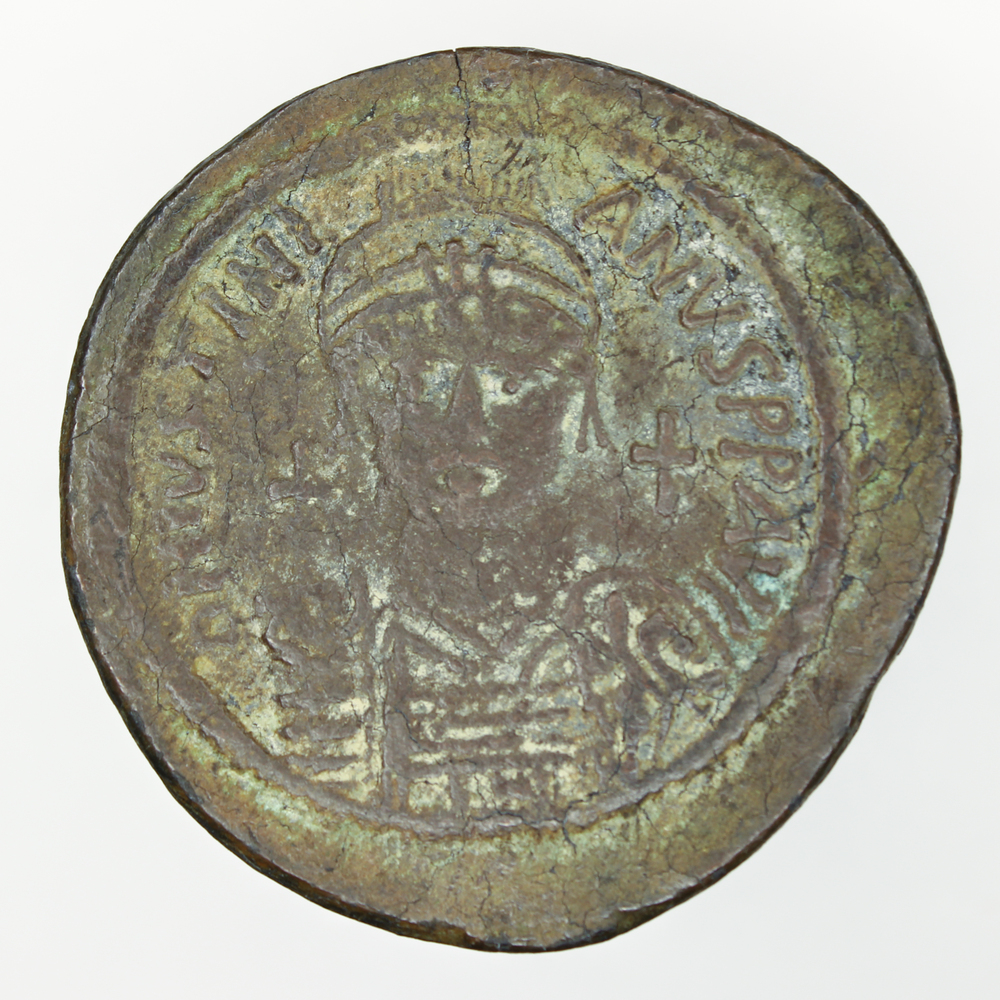Coin of Justinian I
This coin is dated to around 538-539 and was minted in Nicomedia, Bithynia (modern day Turkey). The obverse depicts the bust of the Byzantine emperor, Justinian I, along with the inscription stating “D(ominus)N(oster) IVSTINI-ANVS P(er)P(etuus) AVG(ustus)” which translates to Our Lord, Justinian, Perpetual Augustus. He holds a globus cruciger in his right hand, and a shield in his left.
On the coin’s obverse, the large M is the Greek numeral 40, indicating that this coin was worth 40 nummi. To put this in perspective, during the reign of Justinian, with 40 nummi one could buy (give or take) 10 loaves of bread.
Justinian was the emperor from 527-565, and is best remembered for being a great legislator, who codified ancient Roman laws, summarising them into a functional legal system that courts could refer to. In doing so, his aim was to reduce corruption and increase accountability. He was additionally responsible for the construction of the Hagia Sophia in Constantinople.


